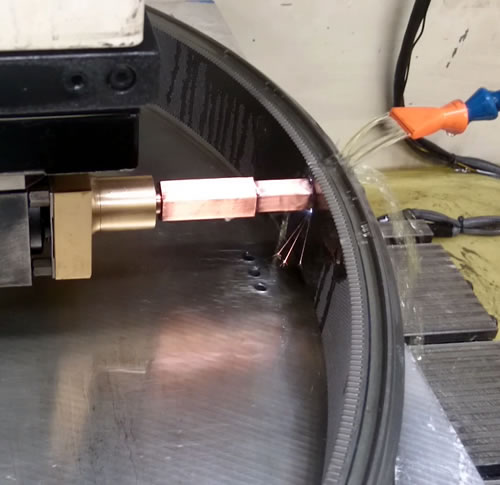What is Spark Erosion?
Spark Erosion machining is a method used when machining intricate detailed pieces.
The process involves both the workpiece and the tool being connected to a direct current, this provides a constant spark between the two.
Where the spark contacts the surface of the workpiece, it is heated to an extremely high temperature. The molten metal on the surface of the workpiece evaporates creating a crater. Continual discharge creates multiple craters, constantly eroding the workpiece to the desired finish.
The workpiece and the electrode are divided by a gap which is occupied by a synthetic insulating fluid.
The liquid allows for eroded debris to be washed away from the work area. The synthetic fluid is used to control the temperature of the process, by eliminating heat to the surrounding area the process results in no distortion or change in temper.
The process is suited for manufacturing intricate or short run parts and it can also be used for the refurbishment of existing damaged parts.

Electrical discharge machining (EDM), also known as spark machining, spark eroding, burning, die sinking, wire burning or wire erosion, is a manufacturing process whereby a desired shape is obtained by using electrical discharges (sparks). Material is removed from the work piece by a series of rapidly recurring current discharges between two electrodes, separated by a dielectric liquid and subject to an electric voltage.
https://en.wikipedia.org/wiki/Electrical_discharge_machining
